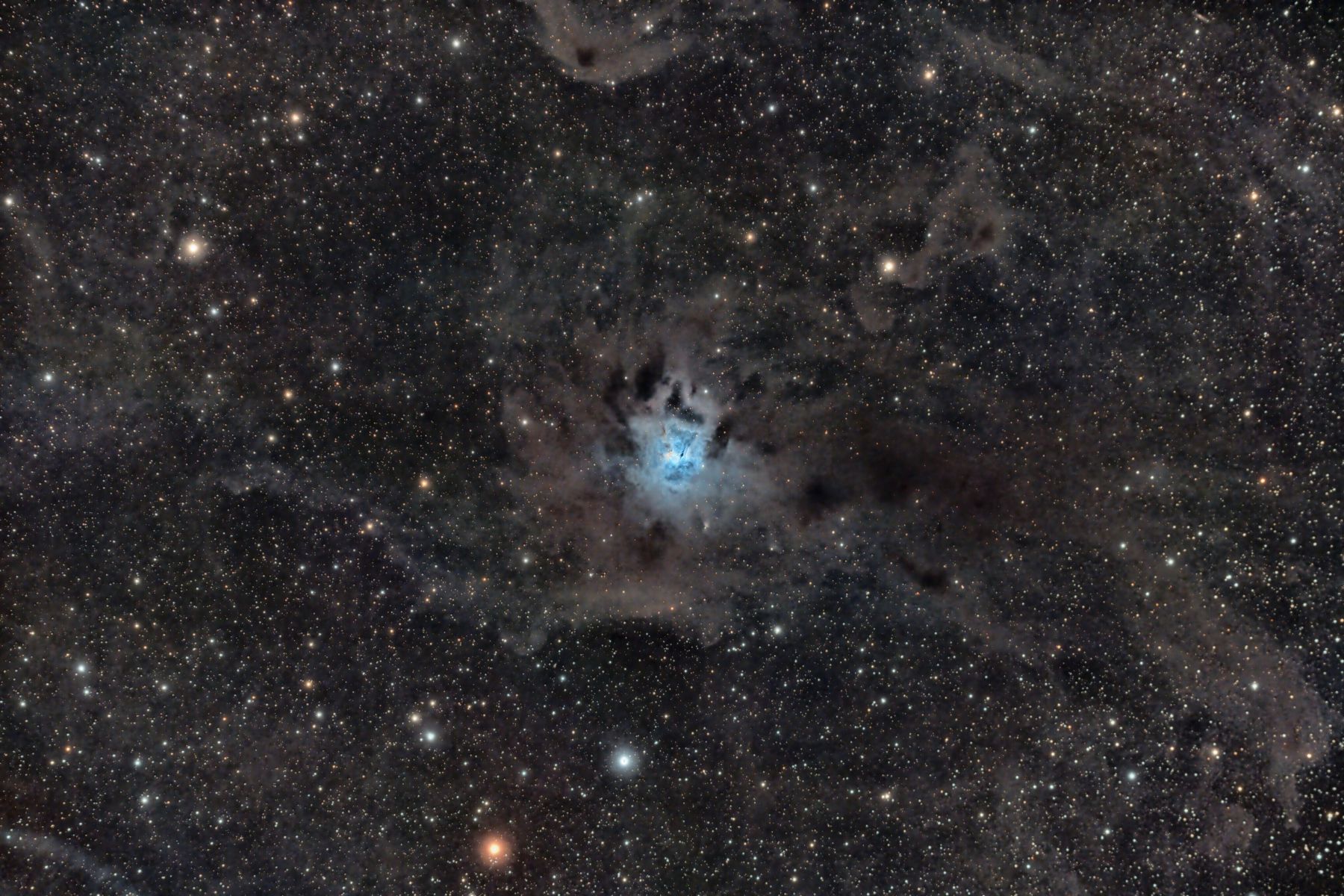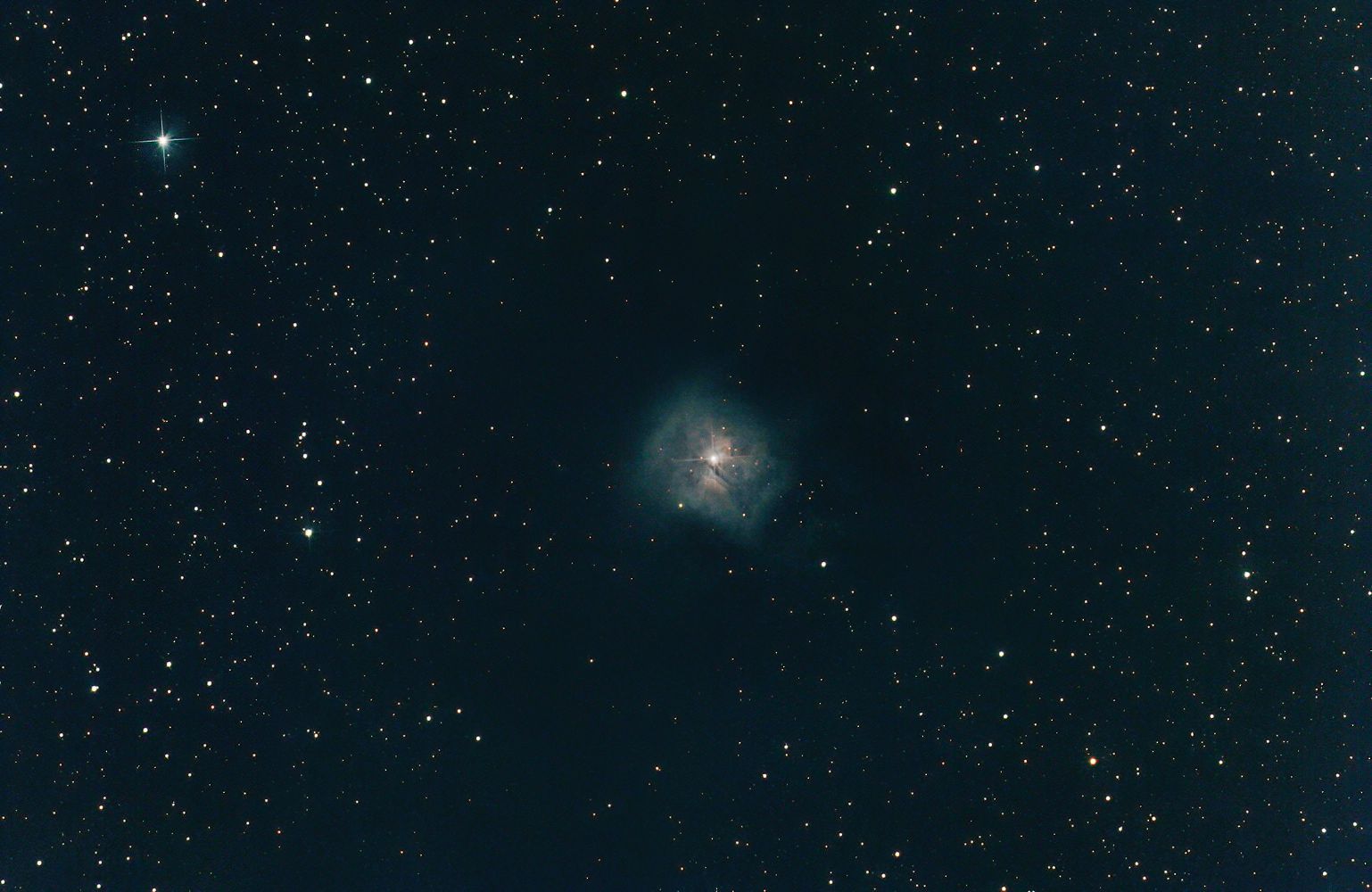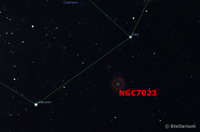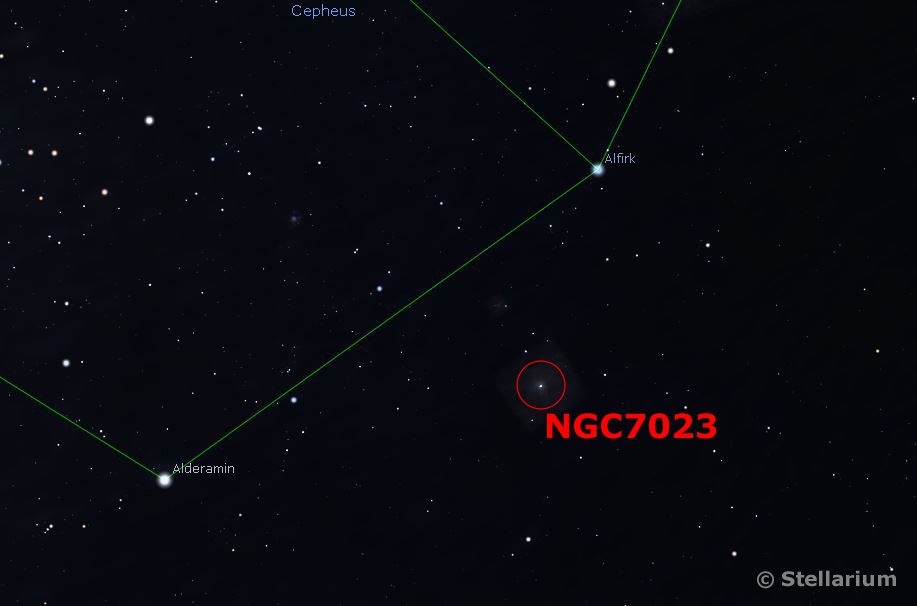Information...
NGC7023 - the Iris Nebula, is a bright reflection nebula in the constellation of Cepheus.
The nebula is 1,300 light-years away and spans a distance of about 6 light-years across. At it's centre lies a hot new star with 10 × the mass of the Sun. Stellar winds from this star have sculpted the surrounding gas/dust, and the light from the star is seen scattered off particles giving it a blue-ish appearance. In some areas, ultraviolet light from the star also causes dust to photoluminesce, giving off reddish light too.
The area surrounding the nebula appears dark, devoid of stars, because of the large amounts of dust which are obscuring their visible spectrum.
Strictly speaking the 'NGC7023' designation refers to the open star cluster which lies within the Iris Nebula, which itself is designated 'LBN487'.
For more info. see the Wikipedia entry.








